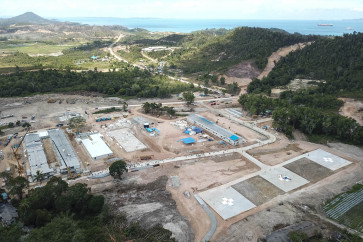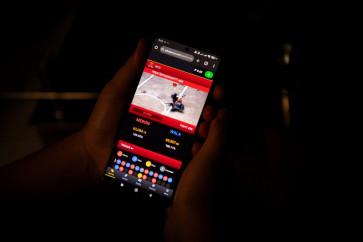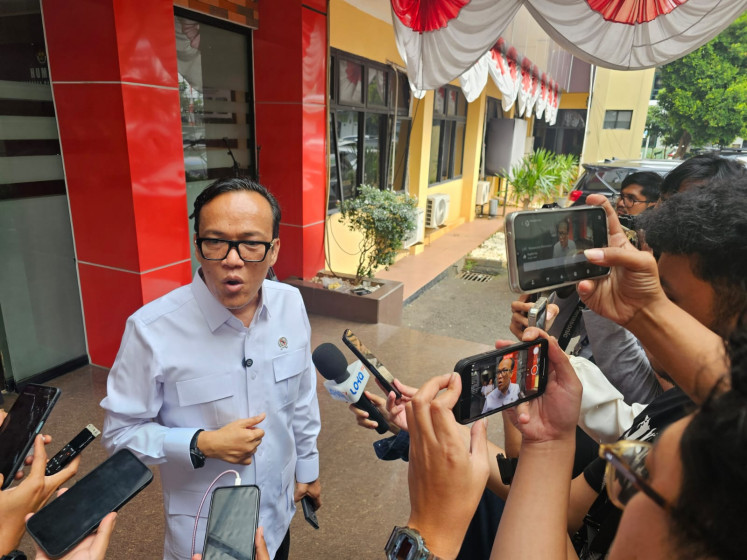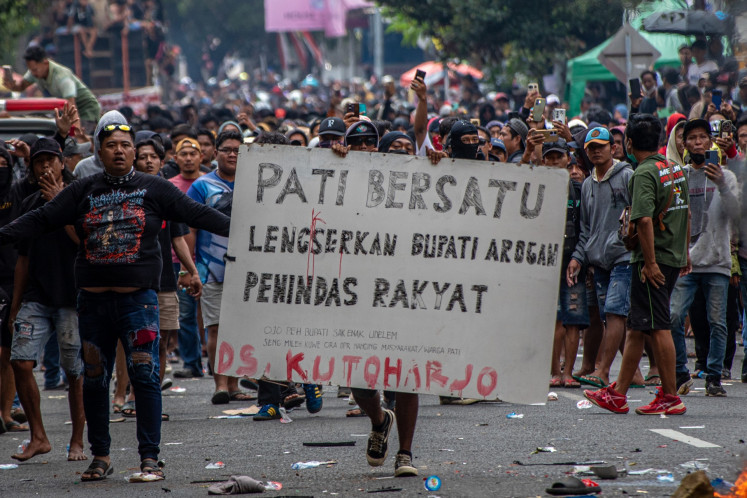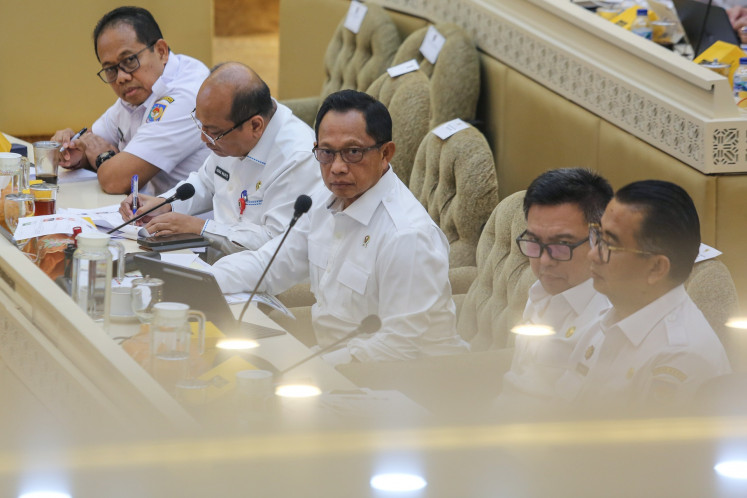Popular Reads
Top Results
Can't find what you're looking for?
View all search resultsPopular Reads
Top Results
Can't find what you're looking for?
View all search resultsTragedy & triumph: The career of photographer Nick Ut
Iconic: Award-winning photojournalist Nick Ut poses in front of his work titled "Terror of War"
Change text size
Gift Premium Articles
to Anyone
Iconic: Award-winning photojournalist Nick Ut poses in front of his work titled "Terror of War". (JP/Wienda Parwitasari)
Nick Ut is widely known for a picture he took when he was 21 years old, but his long and storied career in which he photographed presidents, celebrities and much more spanned almost half a century longer than that.
It was early June of 1972 when Nick Ut heard the Viet Cong had locked down a highway near Trang Bang, about 40 kilometers west of Saigon in Vietnam.
As a 21-year-old photographer for the Associated Press (AP), Nick did what any good war correspondent would do. He went toward the action, hoping to get a glimpse of something worth documenting. Little did he know, his life would soon change forever.
Nick was born in South Vietnam and had been covering the war that was ravaging his home country since he was 16. His older brother, Huynh Thanh My, was shot and killed in 1965 covering the war for the AP. When asked why he pursued such a dangerous job, Huynh always responded the same way.
“I hope one day I will take a picture that stops the war,” Huynh said.
That message inspired and motivated his younger brother, who had already fallen in love with photography. Nick ended up being shot three times during the war and had several other near-death experiences, including an encounter where a rocket whizzed just over the top of his head. He credits his small stature for saving his life that day.
After every close call, Nick remembered his brother words and soldiered on.
Soon after he arrived on the scene near Trang Bang, a full-scale battle was underway. A Viet Cong unit was entrenched near the town, and South Vietnamese fighter planes were firing down napalm, a highly flammable sticky jelly that is used in incendiary bombs and was a trademark weapon of the conflict in Vietnam.
“We heard airplanes coming, and they dropped low enough to drop bombs,” Nick told The Jakarta Post during a speaking event sponsored by Leica in Jakarta. “I was hoping that no people were in the village.”
Nick began shooting the action from a safe distance when suddenly, out of the smoke, civilians began running toward the group of soldiers and photographers where Nick was located.
It turned out that one South Vietnamese plane had misfired, raining napalm down on a village of their fellow soldiers and innocent civilians. The civilians ran for safety, and in that group, a few children emerged.
One of the children happened to be Kim Phuc, a 9-year-old girl who, to Nick’s surprise, was completely naked. As she got closer to Nick, he realized that her back was horribly disfigured, and she was screaming in pain after being burned by the napalm.
“She kept screaming, ‘I think I’m dying! Please help me!’” Nick said.
When Kim got close enough to photograph, Nick snapped one of the most iconic photos of the 20th century. Titled The Terror of War, the photo displayed in brutal clarity the consequences of war on innocent people. It helped to sway public opinion, and knowing the implications of Nick’s photo, former United States president Richard Nixon questioned its validity.
The Pulitzer committee disagreed with Nixon’s remarks and awarded Nick its prestigious award in 1973. Nick was only 22 when he won his Pulitzer, and it could be argued that he accomplished what his older brother set out to do before his life was cut short.
The reason why Kim, who later became popularly known as “napalm girl”, survived that day was largely due to Nick. He poured water on her body and rushed her to the hospital. On the ride there, Kim was screaming in agony and soon passed out.
When they arrived at an extremely crowded hospital, Nick flashed his press pass, and they were ushered through to treatment. She eventually survived after 17 operations and now resides in Canada. She and Nick still talk regularly, their lives inextricably linked to that day in June of 1972.
The picture hit the front page of media outlets worldwide in the days following that catastrophic incident of friendly fire.
Red carpet: Musician Seal (left) and photographer Nick Ut attend the Leica Store Los Angeles grand opening in Los Angeles, California. (AFP/Jason Kempin/Getty Images)While Nick is mostly known for a photo he took when he was 21, his career with the AP lasted another 45 years. He mainly covered assignments in Los Angeles, where he currently resides. His diverse portfolio includes the O.J. Simpson murder trial, the 1992 race riots following the death of Rodney King, several sporting events and even celebrity coverage.
His time in Hollywood saw him brushing shoulders with a-list movie stars, including Warren Beatty and Marlon Brando. Brando was notoriously stingy about the press and photographers, but once he heard that Nick had taken the famous photo, he was welcomed.
“Everyone knew about me because of the picture,” Nick said. “I’m so lucky to have covered the big stars.”
The warm reception Nick received from his renowned photo followed him throughout his entire career. He was sometimes given access to certain events — due to his fame — that other photographers struggled to attain, and his versatility and skill as a photographer led to a staggering array of accomplishments.
In 2012, on the 40th anniversary of his Pulitzer Prize-winning photo, Ut became the third person inducted into the Leica Hall of Fame for his contributions to photo journalism. Leica is an internationally operating manufacturer of cameras with stores worldwide.
Nick retired from the AP in 2017, 51 years after he, as a 16-year-old boy, had to nearly beg the AP for a job. He still photographs, but today his subjects mainly include eagles, whales and natural landscapes.
He also leads photography workshops and speeches in several cities across the globe. He was recently invited to Jakarta where he led a talk about his storied career at the Jakarta Creative Hub in conjunction with Leica.
Nick still has nightmares about what he saw during the war, but his courage helped to change the course of the war and history itself. He is very proud of his work, yet he humbly discusses his career with anyone who is interested.
“I wanted to be a photographer all my life,” Nick said. “I have had thousands of interviews about my photo, but I just feel lucky.” (ste)
— The writer is an intern at The Jakarta Post




